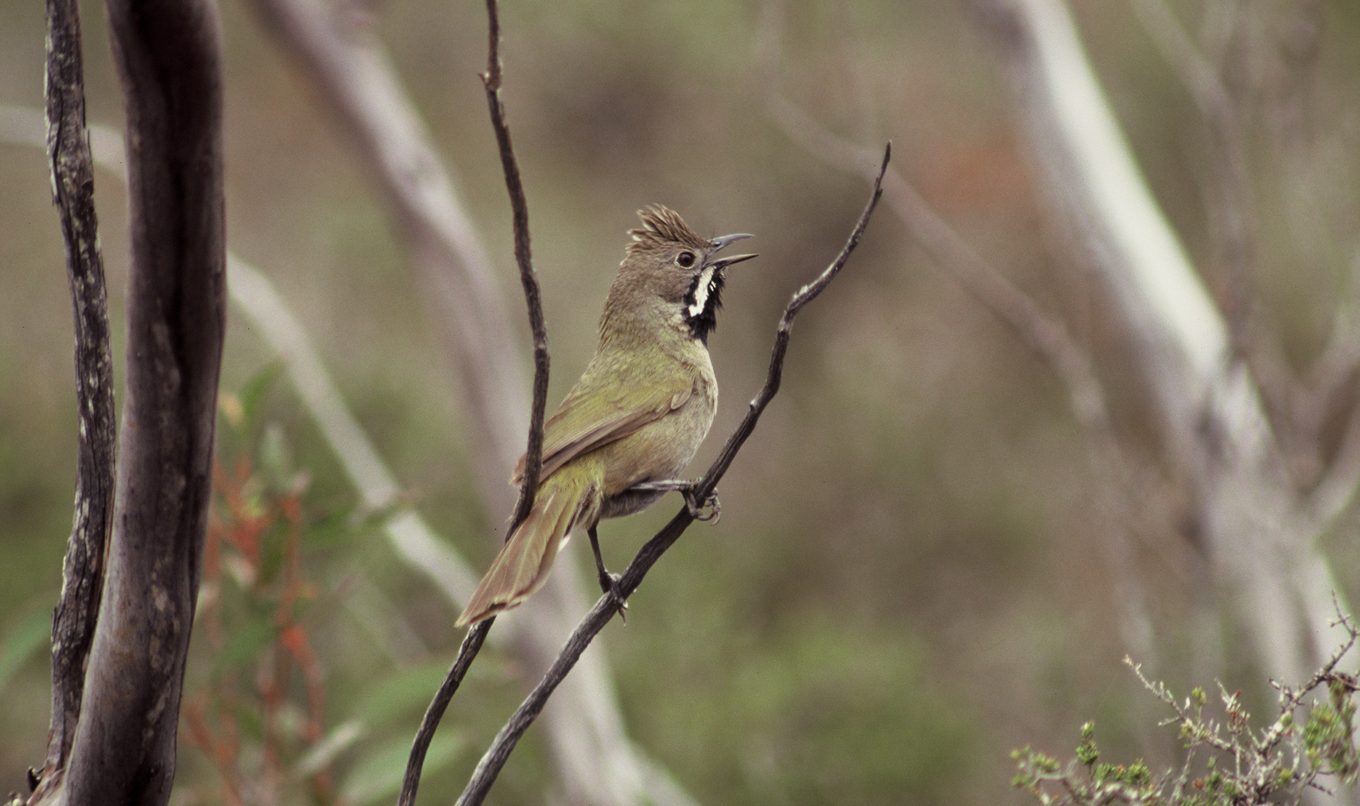Endangered white-belled whipbird rediscovered in Ngarkat Conservation Park
An endangered white-bellied whipbird thought to have been extinct to the region has been rediscovered at Ngarkat Conservation Park in South Australia’s Murray Mallee.

A team of researchers from Victoria’s La Trobe University and community volunteers discovered the whipbird which was presumed extinct after catastrophic wildfires across the region in 2014.
The discovery was made by volunteer, Matilda Southgate, from Mallacoota. Ms Southgate recorded the bird’s call on her phone as part of an extensive 30-day field survey.
Data collected by the survey has increased understanding of the distribution of 10 key species within the endangered Mallee bird community and will directly inform future management efforts to protect and recover these threatened species.
The geographical area known to contain these species has also been selected as one of Australia’s ‘20 Priority Places’ under the Commonwealth 2022-2032 Threatened Species Action Plan.
The survey was conducted as part of the Threatened Mallee Birds project ¬– an initiative of the Mallee Bird Conservation Action Planning Committee and BirdLife Australia.
The project brought together representatives from Victoria, South Australia and NSW government agencies, research institutions and other non-government organisations.
This project was supported by the Mallee Catchment Management Authority, through joint funding from the Australian Government, Murraylands and Riverland Landscape Board and the South Australian Department for Environment and Water.
Dr Simon Verdon, Lead researcher, La Trobe University, said after hearing the recording, he was immediately convinced they had found the whipbird.
"However, we had to ask other experts to verify our find, which took a while because the call was faint with a lot of wind-noise," he said.
"There's the chance now for us to act to benefit them – to inform future conservation efforts and take steps to protect their habitat.
"Until now, there hasn’t been that opportunity because while we suspected some individuals may have survived 2014 wildfires, we didn’t know where they were."
NPWS Conservation Ecologist Chris Hedger said managing appropriate fire regime is critical to this species, especially as the whipbird populations are so small and isolated.
"This finding will enable us to protect and enhance existing habitat through various fire management planning and response activities," he said.
"It will also allow for more concentrated survey efforts to further improve local understanding of this population and it gives us a very useful starting point, rather than trying to find a needle in a 271,000 hectare haystack."

